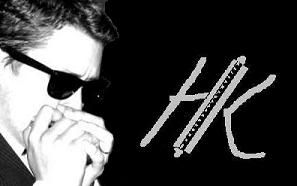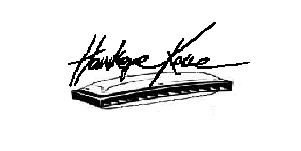HawkeyeKane
1438 posts
Feb 04, 2013
12:32 PM

|
Saturday afternoon, I spent a good deal of time in my basement workshop experimenting with my gear, namely my amplifiers. Since getting it, my Alamo Fury has been a welcome increase in power to my rig. But there've been tradeoffs, primarly in the area of tone. The Fury has a solid state preamp and rectifier, which I believe is a good deal of the cause for this shallowness in tone.
So on a fluke, I decided to run the line out from my Kalamazoo Deuce into the Fury. Lo and behold, with the volume set at about five on each, the tone at 2 on the 'Zoo, and the Bass and Treble zeroed out on the Alamo, I got some very deep, rich tone. Between having two speakers rather than one, a tube "pre-preamp", and a speaker driven input to the Alamo, it gave my sound a ton more balls than it did before. Both my Akai and my rebuilt JT30 sound fantastic through this rig, and when I get a chance, I'll record a demo for you to hear.
Was curious to see if anyone else had taken this kind of approach with two amps, 'Zoo or otherwise?
----------


Hawkeye Kane
|
5F6H
1538 posts
Feb 04, 2013
12:55 PM

|
Lining out a small amp to a PA is commonly done, but lining out to a bigger tube amp can be killer too.
----------
www.myspace.com/markburness
http://www.facebook.com/markburness
|
Harpwood
7 posts
Feb 04, 2013
1:25 PM

|
I gig like this whenever the venue allow us to play a tad louder and I'm not too lazy carrying around two amps.
I run the line out from my Marble Max into a second amp. My favorite combination is with a Princeton clone. Brilliant. But in fact each and every amp I combined with the Max really sounded great so far. I've tried the Max (and gigged with it) lined out into Champs, a Masco PA head, my Marble Harpwood and a few weeks ago even a 2x12 Fender Frontman SS amp which was present at the venue. That was fun too. Loud as hell (the Fender was on 2,5) and a great, straight, rocking kind of blues sound which fit that gig's atmosphere perfectly.
Playing two amps is about the best thing I discovered harp-wise during the last year since I first tried this out of curiousity.
|
lumpy wafflesquirt
685 posts
Feb 04, 2013
3:42 PM

|
isn't this what the boss [Adam] suggests in one of his videos.
It's all about getting the two speakers a long way apart if I remember correctly. No idea of the video number or name.
----------
"Come on Brackett let's get changed"
|
HarpNinja
3175 posts
Feb 04, 2013
3:54 PM

|
I ran a Champ and Double Trouble in tandem for a long time.
----------
Custom Harmonicas
Optimized Harmonicas
|
HarpNinja
3176 posts
Feb 04, 2013
4:25 PM

|
Silverface Champ...I can't edit anything. The site won't let me, but I used a Silverface Champ and not a tweed.
I then used a SFC and Vibro Champ in tandem. Sounded great, but was not a good harp for live use.
----------
Custom Harmonicas
Optimized Harmonicas
|
Thievin' Heathen
148 posts
Feb 04, 2013
8:31 PM

|
I wonder if this qualifies as Odd Ball?
A Peavey Triumph PAG 60
http://www.peavey.com/assets/literature/manuals/80300748.pdf
into an Acoustic 6x10 cabinet.
http://acoustic.homeunix.net/twiki/bin/view/Acoustic/GuitarCabinet104
It's my rig this week. It's a little big to carry to jams and set-up time and real estate might be a factor, but it sounds killer.
|
shbamac
237 posts
Feb 05, 2013
6:41 AM

|
So what is the difference between running from a line out to input vs input to input vs using a ABY box to run two amps? Never have used the line out / ABY but have used two amps running from input to input. I assume using an ABY box would be different than the other two options because the two amp are not interacting. But how does running from one amp into another amp affect the second amp? Looking for more technical with some "tonal" explanations.
|
HawkeyeKane
1443 posts
Feb 05, 2013
6:53 AM

|
----------


Hawkeye Kane
|
5F6H
1539 posts
Feb 05, 2013
6:58 AM

|
@Shbamac "So what is the difference between running from a line out to input vs input to input vs using a ABY box to run two amps? Never have used the line out / ABY but have used two amps running from input to input. I assume using an ABY box would be different than the other two options because the two amp are not interacting. But how does running from one amp into another amp affect the second amp? Looking for more technical with some "tonal" explanations."
An ABY box, or daisy chaining the amp's inputs puts the 2 amps in parallel. The signal from the first amp is not sent to the second. If you daisy chained a Champ to a bassman, both would sound subtly different because of the split signal voltage, but you would have one loud amp playing next to a quieter amp...this may well work for you, but you won't be making the champ significantly louder. You may still get a more complex sound if the Champ is not totally drowned out by the larger amp.
Lining out a champ takes signal from the Champ's speaker, divides it down to an appropriate level to feed a line input, then feeds the entire champ sound into the 2nd amp, including speaker kickback voltages and the effect of running the signal through a cathode biased output stage, for a little sag. Usually you leave the champ's speaker in place, but some amps like the Marble max allow you to switch the speaker out for a tighter sound. This scenario can give a big, stiff sounding, stage amp/PA more warmth & roundness. If you can kill the on-board speaker on the champ (with a load box/resistor in place), it can also allow the bigger amp to give a pleasing tone at much lower volume, perhaps even lower than the Champ through it's own speaker bizarrely!
I use the Champ as an example, but really the idea can be applied to just about any amp.
----------
www.myspace.com/markburness
http://www.facebook.com/markburness
|
HawkeyeKane
1444 posts
Feb 05, 2013
7:00 AM

|
@shbamac
The difference, in my case at least, is that by running the 'Zoo's line out into the Alamo's input, the signal the Alamo receives is directly from the 'Zoo's speaker output. Seeing as the Alamo's solid state preamp is the leading identifiable cause for my struggles in attaining good harp tone, it makes sense that a tube driven preamp and output signal goes into it first. If I were to run it from an ABY or input-to-input as you've described, then all the Alamo would receive is the signal from the mic, which would put me back at square one.
I prolly will get an A/B switch so I can wire more than one mic up. Using both of the Alamo's inputs at once has drastically cut the gain signal as you might expect.
----------


Hawkeye Kane
|
shbamac
238 posts
Feb 05, 2013
8:01 AM

|
Thanks for the answers. But I am still missing something. Okay, so I now understand how running from a line out into another input on a second amp works. What about this as an example: two amps a and b, plug in a mic into amp a, run a cable from amp a second input into the input of amp b. This is what I do. Been doing it for years. Has does this differ from running from a line out other than the obvious.
|
5F6H
1540 posts
Feb 05, 2013
8:12 AM

|
@Shbamac - This would fit under the description of "daisy chaining" or "using an AB" box in my response above. It is more commonly done with amps of reasonably even volumes for more outright power/complexity, rather than to boost volume of a small amp with a louder amp.
----------
www.myspace.com/markburness
http://www.facebook.com/markburness
|
shbamac
239 posts
Feb 05, 2013
8:16 AM

|
Got it thanks.
|
HawkeyeKane
1446 posts
Feb 05, 2013
8:17 AM

|
@shbamac
In some cases, it might be no difference. It depends on the line out circuitry of amp "A". Some amps' line out are run from the preamp circuit, and some are run from the output. My 'Zoo's line out happens to be from the output leads (this is Greg's standard method and that's why I bought mine from him), which I like a lot because whatever you run it into, you're sending every bit of sound generated by the 'Zoo with the obvious exception of the characteristics of it's own internal speaker.
Your method of running input #2 on amp "A" to input #1 on amp "B" will work if the amp is old enough and has the inputs both wired on the same circuit, but this works along the same principal as a preamp-driven line out. Amp "B" is only receiving what's channeling through the preamp circuitry of amp "A".
----------


Hawkeye Kane
|
HawkeyeKane
1447 posts
Feb 05, 2013
8:18 AM

|
Aaaaaand Mark already answered it in far less words than I ever could. Doh!
BTW, is anyone else having trouble editing their previous posts?
----------


Hawkeye Kane
|